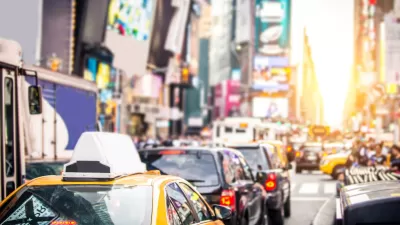The Center for an Urban Future found that ridership in the greater Manhattan area has been up significantly since 1998. But these routes are precisely the ones targeted for service cuts due to decreased revenue.
Our analysis, based on data from MTA New York City Transit, show just how important the city's public transportation system has become for residents living outside the city center:
• 20 of the 22 stations with the largest percentage increase in subway ridership were either in the outer boroughs or in Manhattan north of 96th Street.
• In 2008, 62 stations outside of Manhattan had an average weekday ridership of over 10,000 people, up significantly from 46 stations in 2003 and 36 in 1998.
• More than a quarter of all New York City subway stations-111 out of 425-saw an increase in average weekday ridership of 50 percent or more during the past decade. Brooklyn accounted for nearly half (51) of those stations; there were 28 in Manhattan, 20 in the Bronx and 12 in Queens.
• 13 stations on the L line and nine on the N line were among the 50 fastest growing stations citywide. Other lines with several stations on the top-50 list: the 2 (seven stations), 3 (six stations), F (five stations), J (five stations) and M (five stations).
The growth in outer-borough bus ridership, meanwhile, dwarfed Manhattan's during the same period. Overall, 81.7 percent of the gain in bus riders occurred outside Manhattan. Queens experienced a 28.4 percent increase; Brooklyn a 21.9 percent increase; the Bronx a 23.5 percent increase and Staten Island a 28.4 percent increase. By contrast, Manhattan's bus ridership grew by only 7.6 percent since 1998. (It actually experienced a 6.7 percent decrease between 2003 and 2008, the only borough to do so.)
FULL STORY: Transit Overload

Alabama: Trump Terminates Settlements for Black Communities Harmed By Raw Sewage
Trump deemed the landmark civil rights agreement “illegal DEI and environmental justice policy.”

Planetizen Federal Action Tracker
A weekly monitor of how Trump’s orders and actions are impacting planners and planning in America.

The 120 Year Old Tiny Home Villages That Sheltered San Francisco’s Earthquake Refugees
More than a century ago, San Francisco mobilized to house thousands of residents displaced by the 1906 earthquake. Could their strategy offer a model for the present?

San Francisco Opens Park on Former Great Highway
The Sunset Dunes park’s grand opening attracted both fans and detractors.

Oregon Legislature to Consider Transit Funding Laws
One proposal would increase the state’s payroll tax by .08% to fund transit agencies and expand service.

Housing Vouchers as a Key Piece of Houston’s Housing Strategy
The Houston Housing Authority supports 19,000 households through the housing voucher program.
Urban Design for Planners 1: Software Tools
This six-course series explores essential urban design concepts using open source software and equips planners with the tools they need to participate fully in the urban design process.
Planning for Universal Design
Learn the tools for implementing Universal Design in planning regulations.
Clanton & Associates, Inc.
Jessamine County Fiscal Court
Institute for Housing and Urban Development Studies (IHS)
City of Grandview
Harvard GSD Executive Education
Toledo-Lucas County Plan Commissions
Salt Lake City
NYU Wagner Graduate School of Public Service





























